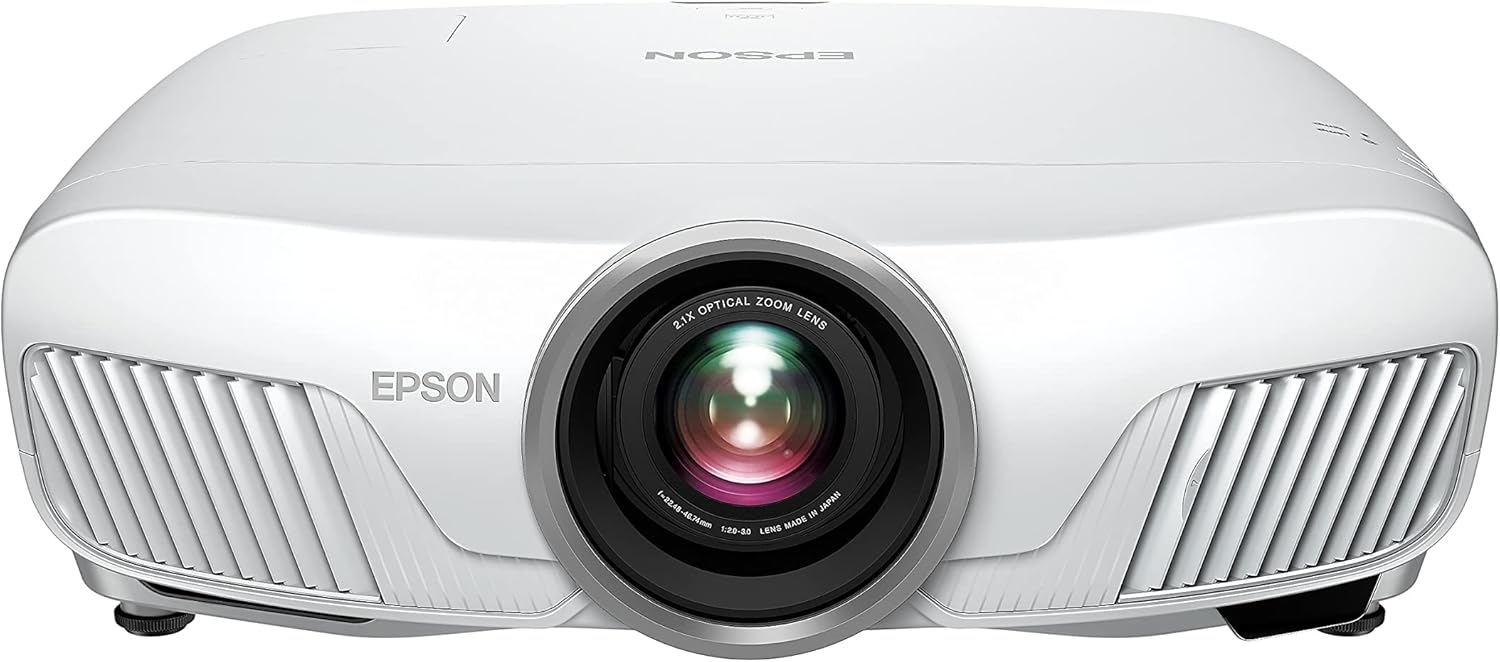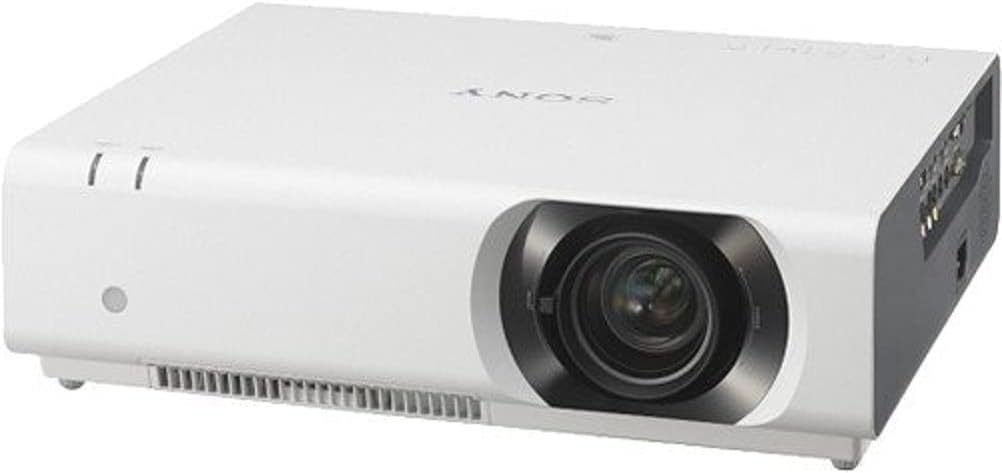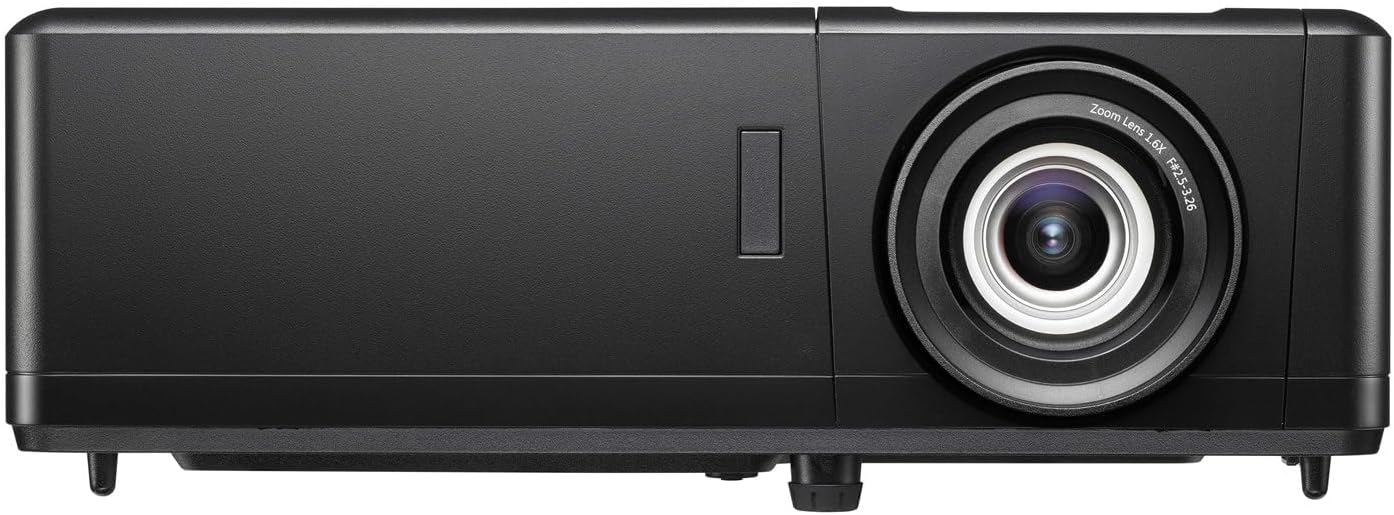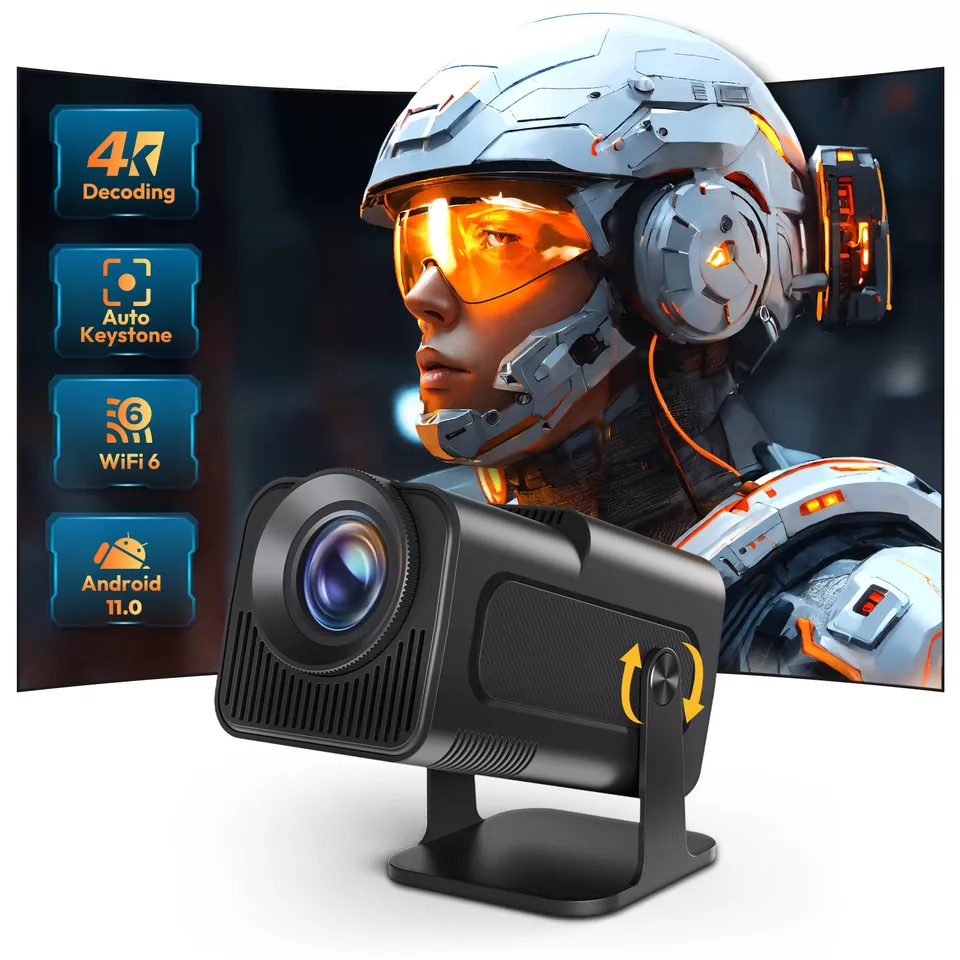

The Best 4 Smart Home Projectors of 2025
- Last updated - Yesterday


Mark Kelsey
With 10+ years of experience reviewing TVs, monitors, and projectors, Mark specializes in exposing hidden parameter pitfalls and brand-driven marketing exaggerations. He merges laboratory-tested metrics (e.g., lumen consistency, color gamut deltas) with real-world trials—such as testing projectors under direct sunlight or in noisy living rooms—to separate marketing claims from practical performance.
As projectors evolve into smarter, interconnected devices, their wireless compatibility with smartphones, tablets, and computers has significantly improved, enabling seamless content sharing and streaming. Modern projectors now prioritize portability and versatility, featuring lightweight designs and robust connectivity options (e.g., Wi-Fi, Bluetooth) that cater to diverse scenarios—from corporate boardrooms to outdoor adventures.
This is precisely the reason why an increasing number of people are opting to purchase projectors. However, I’m frequently asked:
”What aspects should I take into account when buying a projector?”
If I were merely aiming to pad my wallet, I wouldn’t bother to write this report.
I sincerely hope that this article can truly assist you and serve as a comprehensive buying guide.
You Should Look For Smart Home Projectors with :
Support keystone correction
Whether a projector supports keystone correction can significantly affect where you can place it in a room.
Without keystone correction, the projector essentially needs to be fixed in one specific spot to ensure a properly shaped image. This limitation means you can’t freely move it around the room or project from awkward angles without distortion.
In contrast, projectors with keystone correction allow for much greater flexibility, letting you adjust the image digitally to maintain perfect geometry even if the device isn’t perfectly aligned with the screen.
Auto focus
Imagine this scenario: after using the projector in your bedroom, you want to move it easily to the living room for another viewing session.
In such cases, an autofocus feature becomes essential. At the very least, the projector should offer some form of focusing capability, whether that’s automatic focusing or a one-touch focus adjustment via the remote control.
This makes repositioning hassle-free and ensures the image stays sharp without the need for manual fiddling every time you move it.
Low noise & Good heat dissipation effect
Projectors operate with very bright light sources, which inevitably generate a significant amount of heat. As a result, the cooling system — usually a built-in fan — has to work hard to dissipate this heat, and this often produces some noise during operation.
If you’re sitting close to the projector, louder fan noise can become distracting and negatively impact your viewing experience.
Therefore, when choosing a projector, consider models with efficient, quiet cooling systems to maintain an immersive and enjoyable environment.
Additional Accessories
Different usage environments come with varying levels of ambient light. To tackle this, it’s wise to choose a projector with ambient light adaptive functionality.
Such projectors can automatically adjust the brightness of the image based on the surrounding light conditions, ensuring that the picture remains clear and comfortable to watch, whether you’re in a bright living room or a dim bedroom.
This feature greatly enhances viewing flexibility and helps maintain optimal image quality in any setting.
You Should Avoid Smart Home Projectors with :
Single system
Some projectors still rely on outdated or very basic systems, making them suitable primarily for office or classroom use rather than home entertainment.
In fact, many of these models lack a built-in operating system altogether. They can only display content by connecting directly to a computer or mobile device, meaning you’re entirely dependent on external hardware for your viewing experience.
For a truly smart and versatile projector, it’s best to look for models with integrated systems that support apps and streaming natively.
Cumbersome to use
When using a projector, it’s common to connect devices like smartphones, iPads, and laptops. Relying on wired connections with adapters and tangled cables not only complicates the setup but also limits where you can position the projector.
For greater convenience, opt for a projector that supports wireless connectivity, ideally one that has its own built-in hotspot and supports wireless screen mirroring.
This setup makes connecting devices much faster and easier, giving you the freedom to use the projector anywhere without being tethered by cables.
A projector that’s too bright
Many people assume that the higher the projector’s brightness, the better, believing it ensures a clear picture even in daylight or brightly lit rooms. However, this is a common misconception.
Excessively high brightness can actually cause eye strain and discomfort, especially for more vulnerable groups like children and the elderly. Prolonged exposure to overly bright images increases the risk of vision fatigue and, in some cases, long-term eye damage.
It’s important to find a balanced brightness level that delivers clear visuals without compromising eye comfort and health.
Too expensive
Nowadays, many projectors on the market come with extremely high price tags. The aim of this article is to introduce you to a well-rounded, feature-rich projector that offers excellent value for money.
We want to help you find a product that combines comprehensive functionality with a reasonable price, so you don’t have to compromise quality for affordability.
We evaluated Smart Home Projectors based on these 7 criteria
- Brightness
- Resolution
- Contrast
- Throw ratio
- Light source
- Sound
- Value for money
The 4 Best Smart Home Projectors for 2025
In the past three months, we tested 21 different Smart Home Projectors. Based on our expert opinions and thousands of consumer reviews, the following four models are the best:
Pros
- Mini body and easy to carry
- A tripod can be placed on the bottom
- 1080p Full HD
- Support wireless mobile phone screen sharing
- Support 2.4-5G/wifi
- Projection distance 40~300 inches
- LCD light source
- Noise less than 30db
- Compatible with all configurations
- Smart system
- Contrast ratio 35000:1
- Supports auto focus
- Low blue light technology
- Reasonable price
Review
Among the many contenders for the best projector, we initially didn’t have high expectations for this brand. However, when the samples arrived, we were genuinely pleasantly surprised. The actual product is smaller than anticipated, and the matte finish gives it a modern, understated elegance that feels both refined and premium. It comes with a built-in stand that allows for 120° vertical adjustment, along with pre-drilled wall-mount holes — making it highly versatile whether you’re setting it up indoors or taking it outside.
What truly surprised me was how this projector performs on par with many big-name models on the market that easily cost over a thousand pounds.
It really makes you question just how inflated brand premiums have become these days.
Despite its compact size, it delivers a stunning 1,800 ANSI lumens of brightness and boasts a 35,000:1 contrast ratio, which means it’s more than capable of handling all your everyday viewing needs – whether it’s movie nights, presentations, or gaming.
This feels like a real breakthrough in projector technology.
What impressed us even more was the incorporation of low blue light technology. Typically, staring at screens up close causes eye muscle strain, but good projectors clearly indicate their blue light emission levels. This model from LumiCast, with its reduced blue light radiation, provides much better eye protection, which is a real benefit.
The resolution support goes up to 4K, and after thorough testing, it truly lives up to this claim. LumiCast delivers high resolution and exceptional colour reproduction, making it ideal for home cinema setups or even restaurant use.
Additionally, the projector’s features are almost flawless. It includes keystone correction and motorised focus — exactly the functionalities we highlighted earlier in this report. It powers up quickly, and the user interface is intuitive enough that you barely need to consult the manual. The abundance of user-friendly settings is a definite bonus.
Though LumiCast isn’t a household name, its overall quality surpasses many big brands, and the price remains very reasonable. For these reasons, we’ve ranked LumiCast as our number one choice. In truth, our role is to uncover hidden gems among lesser-known brands — products that combine affordability with outstanding performance, outshining the more expensive big names.
Added Bonus: Use code WELCOME10 and get additional Flat 10% OFF.
Note: This offer was available at the time of our last check and may no longer be active. Please verify availability at checkout before making a purchase.
2.Epson

Our Rating
Price
Pros
- High-Quality Image
- Portability
- Quick On/Off
Cons
- Relatively high price
- Limited Battery Life
- Sound Quality
Review
As an avid home theatre enthusiast, I’ve had the pleasure of experiencing the Epson Smart Portable Laser Projector firsthand. It’s genuinely a marvel of modern engineering — combining portability with powerful laser projection to deliver sharp, vibrant images. Its smart streaming capabilities are also impressively seamless, making it easy to access your favourite content.
That said, while the Epson Home Cinema 4010 has long been a favourite in the laser projector market and certainly delivers solid image quality and smart functionality, our hands-on testing revealed that its advantages aren’t quite as untouchable as we once assumed.
In fact, the LumiCast Smart Projector, which comes in at less than a fifth of the cost, performs on par in many key areas — and in some respects, even pulls ahead.
On paper, the Epson boasts 2,400 ANSI lumens versus Nytvisuel’s 1,800, but in everyday viewing conditions — particularly in dimly lit rooms or during evening use — the 600-lumen gap is barely noticeable. When it comes to colour reproduction, contrast (with LumiCast offering a dynamic contrast ratio of 35,000:1), 4K decoding, and low blue light technology, the LumiCast holds its own. If anything, it offers greater flexibility with its user-friendly design and wider range of ports.
So, if you’re looking for the best all-round value, the LumiCast is the smarter choice in our books.
But if price isn’t a concern, then by all means, go for the Epson Home Cinema 4010.
3. Sony

Our Rating
Price
Pros
- SXRD Panels
- HDR Compatibility
- Motorized Lens System
Cons
- Brightness
- No 8K support
- Low cost-performance
- Long-term reliability concerns
Review
This unit clearly reflects Sony’s dedication to superior image quality, boasting an elegant 4K resolution that is truly commendable. However, despite its sleek design and impressive features, there are areas worth a closer look.
The VPL-CH375, while delivering crisp and detailed images, seems to make a slight compromise on brightness. This means it may struggle to perform as vividly in well-lit environments, prompting cinephiles to draw the curtains tighter for that perfect cinematic experience during the day.
Furthermore, the interface, although user-friendly, may not offer the snappy responsiveness that tech enthusiasts have come to expect. It’s a bit like driving a luxurious car with moderate horsepower — you enjoy the comfort and refinement but find yourself craving a bit more dynamic performance under the hood.
Finally, this projector sits firmly at the higher end of the price range, positioning it alongside competitors that offer comparable picture quality without such a hefty price tag. Buyers should carefully weigh the benefits of its refined 4K projection against these subtle, yet notable, trade-offs in usability and cost.
4. Electrolux

Our Rating
Price
Pros
- 4K Resolution
- Brightness
- Smart Features
Cons
- Black Levels and Contrast
- Input Lag
- Color Calibration
This projector attempts to blend 4K resolution, affordability, and smart features into a unified user experience. While it delivers a bright image, which is essential for viewing in well-lit environments, it does come with a few notable caveats.
The inclusion of smart features reflects modern user demands, yet it’s clear there’s room for improvement to match the seamlessness offered by competing models. The black levels and contrast ratios, although acceptable, lack the depth and richness that true enthusiasts expect — especially in scenes where deep blacks are crucial to storytelling.
Additionally, the colour accuracy out of the box leaves something to be desired, indicating that some calibration is necessary to make HDR content really stand out as intended.
In the end, despite aiming to be a versatile all-rounder, the UHZ50e falls into the familiar trap of mastering none of its ambitions fully. It’s a decent performer overall, but those prioritising nuanced picture quality might want to explore other options.

Over 230,000+
How do we rate?
This score is based on four key metrics – extensive testing, utility level, customer feedback, and brand reputation. We set extraordinarily high testing standards for our readers, so you can have complete confidence in our recommendations.

Copyright © 2025 All Rights Reserved.
The listings featured on this site are from companies from which this site receives compensation. This influences where, how and in what order such listings appear on this site.
Designed to help users make confident decisions online, this website contains information about a wide range of products and services. Certain details, including but not limited to prices and special offers, are provided to us directly from our partners and are dynamic and subject to change at any time without prior notice. Though based on meticulous research, the information we share does not constitute legal or professional advice or forecast, and should not be treated as such.
Reproduction in whole or in part is strictly prohibited.
As an Amazon Associate we earn from qualifying purchases.
